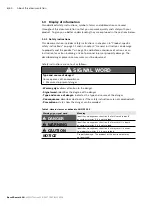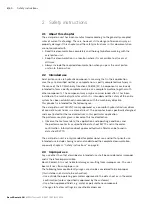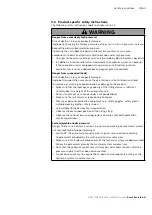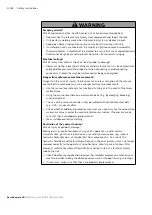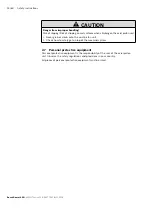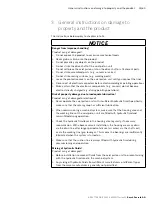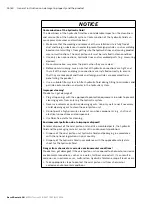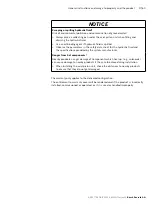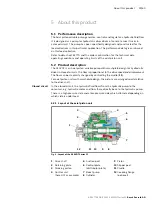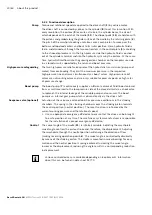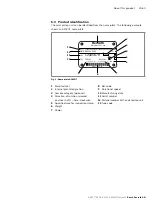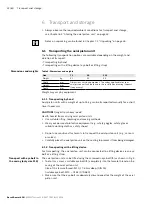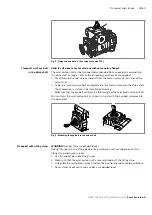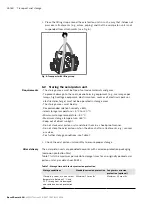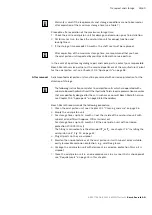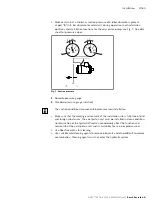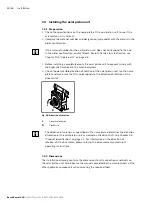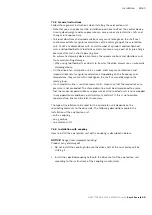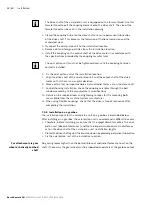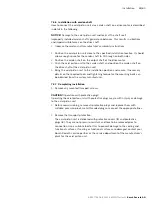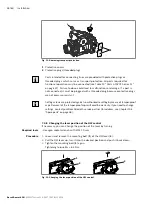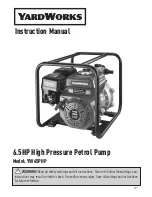
20/60
About this product
Bosch Rexroth AG
, A10VGT Series 11, RE 92770-01-B/11.2016
5.2.2 Functional description
Torque and rotational speed are applied to the drive shaft (
1
) by a drive motor.
The drive shaft is connected by splines to the cylinder (
8
) to set this in motion. With
every revolution, the pistons (
9
) execute a stroke in the cylinder bores, the size of
which depends on the pitch of the cradle (
11
). The slipper pads (
10
) are held on with
the pistons and guided along the glide surface of the cradle by the retaining plate (
2
).
The pitch of the swashplate during a rotation causes each piston to move over the
bottom and top dead centers and back to its initial position. Here, hydraulic fluid is
fed in and drained out through the two control slots in the control plate (
5
) according
to the stroke displacement. On the high-pressure side the hydraulic fluid is pushed
out of the cylinder chamber and into the hydraulic system by the pistons. At the same
time, hydraulic fluid flows into the growing piston chamber on the low-pressure side.
In a closed circuit, supported by the return and boost pressure.
The two high-pressure relief valves protect the hydrostatic transmission (pump and
motor) from overloading. They limit the maximum pressure in the respective
high-pressure line and serve simultaneously as boost valves. High-pressure relief
valves are not working valves and are only suitable for pressure peaks or high rates
of pressure change.
The boost pump (
7
) continuously supplies a sufficient volume of fluid (boost volume)
from a small reservoir to the low-pressure side of the closed circuit via a check valve
to replenish the internal leakage of the variable pump and consumer. The boost
pump is an internal gear pump which is driven directly via the drive shaft.
Actuation of the sequence valve establishes pressure equilibrium in the stroking
chambers. The spring in the stroking chamber moves the stroking piston towards
the central position (neutral position). The reset function is influenced by the
current working pressure and the rotational speed.
▶
Use an appropriate emergency-off device to ensure that the drive can be brought
to a safe position at any time. The machine or system manufacturer is responsible
for the installation of a proper emergency-off device.
The swivel angle of the cradle (
11
) is infinitely variable. Adjusting the swashplate
swivel angle controls the piston stroke and, therefore, the displacement. Adjusting
the swashplate through the neutral position will change the direction of flow
(making reversing operation possible). The swivel angle is controlled hydraulically
by means of the stroking piston. The cradle is mounted in swivel bearings for easy
motion and the neutral position is spring-centered. Increasing the swivel angle
increases the displacement; reducing the angle results in a corresponding reduction
in displacement.
Various control devices are available depending on requirements. Information
about this can be found in data sheet 92770.
Pump
High-pressure safeguarding
Boost pump
Sequence valve (optional)
Control

